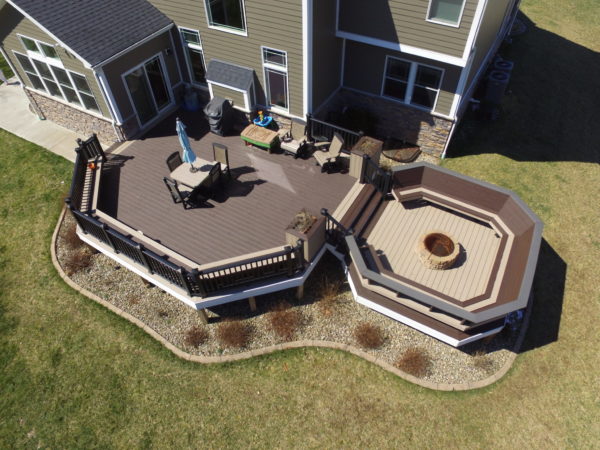Wood vs Composite Decking - Which is Best for You?
April 4th, 2023 | by Shannon FisherWhen it comes to building a deck, a significant factor you’ll have to consider is what material to use. Two of the most popular options are wood and composite decking. Both of these materials have their pros and cons, so this blog is here to be your guide and help you decide what material is best for you.
Composite Decking
Composite decking is made from a combination of wood fibers and recycled plastic materials, creating a strong, durable, and low-maintenance decking option. Here are some things to consider before committing to composite decking:
Benefits
Low maintenance
Unlike wood decking, composite decking doesn’t require regular sealing, staining, or painting. Simply cleaning your composite deck with soap and water once or twice a year is all that’s needed to keep it looking new year after year.
Durability
Composite decking is highly resistant to moisture, fading, and warping, making it an excellent choice for outdoor use. It can also withstand heavy foot traffic, making it ideal for decks and outdoor living spaces.
Long lifespan
Composite decking can last for decades with minimal maintenance, making it a smart investment for homeowners looking to add value to their homes.
Eco-friendly
Because composite decking is made from recycled materials, it’s a more environmentally friendly option than wood decking.
Variety of styles
Composite decking comes in a wide range of colors and styles, mimicking the look of real wood. This allows you to customize your deck to match your home and style.

Disadvantages
Cost
Composite decking can be more expensive than wood decking, especially for higher-end materials. However, since the lifespan of composite is much higher than traditional wood, it may be worth the investment in the long run as it saves you repair, replacement, and maintenance costs.
Heat retention
Composite decking can retain more heat than wood decking because of the material it’s made of. This can make it a bit less pleasant to walk on during hot summer days. Though there are some solutions to this such as a covered deck, choosing a lighter color of decking, or even using water to help cool the surface.
Staining
While composite decking is less prone to staining than wood decking, it’s not completely stain-resistant and can still become discolored over time.
Wood Decking
Now that we’ve gone over the advantages and disadvantages of composite decking, let’s take a look at what we can expect from a wooden deck.
Benefits
Natural look and feel
Wood decking has a traditional look and feel that many homeowners prefer. It can also be stained or painted to match your home’s style.
Affordability
Wood decking is often less expensive than composite decking, making it a more budget-friendly option for homeowners.
Easy to work with
Wood decking can be cut and shaped more easily than composite decking, making it a good choice for decks with unique shapes or designs.
Disadvantages
Maintenance
Wood decking requires regular maintenance, including sealing, staining, or painting, to prevent rot, decay, and insect damage. Failure to maintain wood decking properly can lead to its deterioration over time.
Durability
Wood decking is more susceptible to moisture, fading, and warping than composite decking. It’s also more prone to damage from heavy foot traffic or outdoor elements, so it likely will need to be replaced or repaired several times throughout its life.

Eco-friendliness
Many wood decking materials are harvested from old-growth forests or other ecologically sensitive areas, contributing to deforestation and other environmental issues.
Potential hazards
Wood decking can splinter and crack over time, posing a safety hazard to bare feet and hands.
Both wood and composite decking have their pros and cons, and can be great choices for your outdoor living space. Ultimately, the decision between wood and composite decking will depend on your specific needs, preferences, and budget.